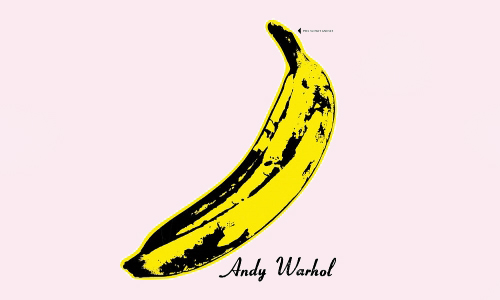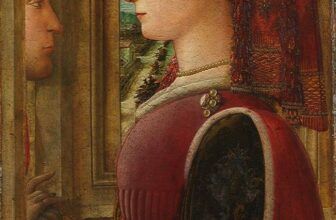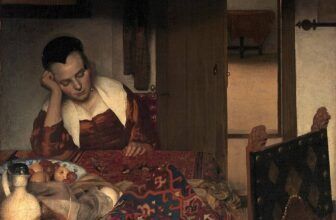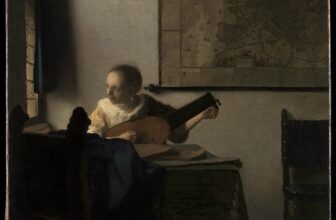
The Meaning Behind Andy Warhol’s Banana Painting
A Deep Dive into Pop Art’s Most Curious Fruit
Andy Warhol’s Banana painting stands as one of the most iconic images of the 20th century. It is deceptively simple: a yellow banana, often with a “peelable” sticker overlay, set against a stark white background. First introduced as the cover artwork for The Velvet Underground & Nico’s debut album in 1967, Warhol’s banana image has since become a symbolic touchstone of Pop Art. But beneath its bright, minimal surface lies a rich world of meaning, commentary, and art historical significance.
In this long-form exploration, we’ll examine the origins, creation, artistic context, and enduring cultural significance of Warhol’s Banana painting, peeling back its layers to understand what makes it such a potent and lasting symbol in the art world.
1. The Origins: Who Made the Banana Painting and How?
The Artist: Andy Warhol
Andy Warhol was one of the most influential artists of the 20th century, a central figure in the Pop Art movement, which emerged in the 1950s and blossomed in the 1960s. Warhol, originally a commercial illustrator, brought a unique sensibility to fine art: he was fascinated by consumer goods, mass production, celebrity culture, and the everyday objects that made up American life.
Born Andrew Warhola in 1928 in Pittsburgh, Pennsylvania, Warhol studied commercial art and began his career as an illustrator for fashion magazines. By the early 1960s, he transitioned into fine art, creating silkscreen prints of Campbell’s Soup cans, Coca-Cola bottles, and celebrities like Marilyn Monroe. These works challenged conventional definitions of art by blurring the lines between high art and mass consumerism.
The Banana Painting
The Banana painting was created using Warhol’s signature silkscreen printing technique. This process allowed Warhol to reproduce images in series, reflecting the mechanized and reproducible nature of consumer culture. He often took images from advertisements, magazines, or everyday life and transferred them onto canvas using silk screens, which allowed for easy replication and intentional variations.
The original banana image was created for the cover of The Velvet Underground & Nico, a collaboration that was not just artistic but deeply personal. Warhol was managing the band at the time and designed the now-famous cover. The original vinyl LP featured a yellow banana sticker with the instruction: “Peel slowly and see.” When peeled, it revealed a pink, flesh-toned banana underneath, a provocative touch typical of Warhol’s wit.
2. What Is Andy Warhol’s Banana Painting All About?
Pop Art and Commercial Imagery
At its core, the Banana painting exemplifies Pop Art’s ethos. Pop Art sought to elevate everyday objects into the realm of fine art, challenging the elitism of the art world and reflecting the visual language of postwar consumer culture.
Warhol’s banana image is bold and minimal, stripped of any background or context, like a commercial logo or product label. It confronts the viewer directly, drawing attention to its simplicity and its form. Just as he had done with soup cans and soda bottles, Warhol took the humble banana and turned it into an artistic icon.
The Banana as Symbol
But the banana isn’t just a fruit, it’s a loaded image. In American culture, bananas have long held connotations of comedy (think slapstick routines with banana peels), exoticism (bananas were once a rare treat in the U.S.), and even eroticism. The suggestive shape of the banana, combined with the interactive “peel to reveal” cover of the album, plays into this multifaceted symbolism.
For Warhol, who was openly gay at a time when it was dangerous to be so, the banana could be read as a queer symbol, hinting at sexuality, desire, and identity in coded ways. The cover’s interactivity, inviting the viewer to “peel slowly”, adds an intimate and sensual layer to the artwork.
3. Symbolism and Interpretation of the Banana Painting
The Banana as Cultural Artifact
The banana has often been used to represent the intersection of nature and culture. In Warhol’s hands, it becomes a symbol of how organic objects can be commodified. This is a recurring theme in Warhol’s work: the tension between natural form and mechanical reproduction.
In the Banana painting, Warhol captures a natural object and presents it in a way that strips it of its naturalism. The image becomes stylized, almost cartoonish, reduced to a high-contrast graphic form that could be mass-produced. It’s no longer a fruit to be eaten, it’s an image to be consumed.
Eroticism and Queer Subtext
There’s no denying the phallic symbolism of the banana. Warhol was known for playing with ideas of desire, identity, and the body, often using coded imagery to explore themes of sexuality. The peeling action on the original LP cover turned the banana into a participatory erotic joke.
The queer subtext is particularly powerful considering the cultural context of the 1960s. Warhol’s studio, The Factory, was a haven for queer artists, drag performers, and underground filmmakers at a time when mainstream culture was still highly conservative. The Banana painting, then, becomes not only a playful image but a subtle act of rebellion and identity assertion.
Humor and Irony
Like much of Warhol’s work, the Banana painting is laced with irony. The image of a banana is so mundane, so non-threatening, that its elevation to fine art becomes a kind of joke. Warhol was fascinated by kitsch and camp, by the absurdity of modern life, and the banana embodies these ideas perfectly.
He once said, “I want to be a machine,” reflecting his interest in detachment and mechanization. The Banana painting, mechanically reproduced and emotionally neutral on the surface, invites viewers to find their own meaning, or simply to laugh.
4. What’s Happening in the Painting?
Warhol’s Banana painting is not a narrative piece. There is no background, no characters, no setting, just the object. This minimalist composition is intentional. By isolating the banana from all context, Warhol forces the viewer to confront it directly and ask: why is this art?
It’s a visual statement about the power of imagery. By taking something banal and presenting it with artistic seriousness, Warhol reveals how context and presentation influence meaning. The banana isn’t doing anything, but the viewer is. The painting invites interpretation, engagement, even amusement.
This interaction becomes more literal in the album cover version, where the viewer peels back a layer to reveal another image beneath. That action, simple as it is, turns the viewer into a participant in the artwork. It’s not just a painting to look at, it’s an experience to be had.
5. What Type of Art Is the Banana Painting?
Pop Art Defined
Warhol’s Banana painting is a quintessential example of Pop Art, a movement that emerged in the 1950s in Britain and the United States. Pop Art was a response to both the elitism of the art world and the rise of mass consumer culture. It drew from advertising, comic books, product packaging, and television, seeking to dissolve the boundaries between “high” and “low” culture.
Pop Art used bold colors, recognizable imagery, and mechanical reproduction methods to reflect and critique modern life. Warhol was perhaps the movement’s most famous figure, known for his aphorisms (“In the future, everyone will be world-famous for 15 minutes”) and his revolutionary use of silkscreen printing.
Conceptual and Participatory
In some ways, Warhol’s Banana also anticipates Conceptual Art, where the idea behind the artwork is as important (if not more so) than the object itself. The painting’s minimalism and ambiguity encourage conceptual engagement: viewers must think about what the banana means, why it matters, and how it functions in the culture.
The interactivity of the original LP cover also pushes the artwork into the realm of Participatory Art, art that requires action from the viewer to be fully realized.
6. Where Is Andy Warhol’s Banana Painting Today?
The original Banana artwork was designed for The Velvet Underground & Nico album, released in 1967 by Verve Records. The original pressing with the peelable sticker has become a highly sought-after collector’s item.
Today, you can see versions of Warhol’s Banana at The Andy Warhol Museum in Pittsburgh, Pennsylvania, the largest museum in the U.S. dedicated to a single artist. The image is also held in numerous private and public collections, often in the form of prints or posters.
In Museums and Pop Culture
Beyond physical locations, the Banana painting lives on in pop culture. It’s been reinterpreted, parodied, and referenced in everything from streetwear to tattoos to music videos. Its simplicity makes it endlessly reproducible, and its layered meanings make it endlessly fascinating.
Warhol’s legacy is such that even his most minimal works, like the banana, are studied, debated, and celebrated around the world. The image has been featured in exhibitions dedicated to Pop Art and Warhol’s oeuvre in institutions like the Museum of Modern Art (MoMA), the Tate Modern, and the Whitney Museum.
Why the Banana Still Matters
At first glance, Andy Warhol’s Banana painting may seem like a joke, a one-off album cover that happened to catch on. But like all great art, its power lies in its layers.
It’s a commentary on consumerism, a queer icon, a pop culture relic, and an interactive experience. It turns an everyday object into a subject of artistic contemplation. In Warhol’s hands, the banana becomes more than a fruit, it becomes a symbol of the absurdity, beauty, and complexity of modern life.
Fifty years after its creation, the banana continues to provoke, amuse, and inspire. It reminds us that art is not always about grandeur or complexity. Sometimes, all it takes is a banana, and the genius to see its potential.




